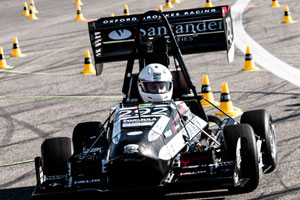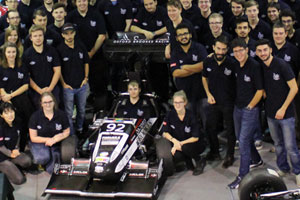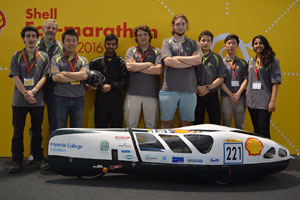
|
HORIBA MIRA - shaping journeys of the future
DRIVING THE FUTURE
OF TRANSPORT
TECHNOLOGY
HORIBA MIRA is a global firm renowned for its pioneering work in engineering, research, design and testing for the transport sector – including automotive, defence, rail and aerospace. Originally a government funded research agency, now a global independent vehicle engineering and development consultancy, their new engineering centre of excellence – MIRA Technology Park – will be the largest centre of its kind in Europe when complete.
70 years of driving transport technology
HORIBA MIRA’s 70 year heritage includes developing the world’s first automotive wind tunnel, working on one of the world’s first electric vehicles and the development of today’s driverless vehicle technologies. The development of this world-class technology centre from HORIBA MIRA is at an advanced stage, with planning and development activities well underway. At the heart of the 87.5 hectare, 1.5 million square foot development will be the MIRA Engineering Centre, which will create a platform for the rapid delivery of bespoke R&D centres ranging from start-up facilities right up to major European R&D operations – and interest from around the world has already been significant.
Complete control to enhance efficiency
RS will be helping HORIBA MIRA to develop the internal stores process, acting as a strategic partner for all consumables on site using its’ Store Manager solution – which gives complete visibility of stock levels, control over spend and improved efficiency, with one centralised store, optimising all purchases. Using mobile devices to scan product and employee data, HORIBA MIRA has full control over who can order, with access to real-time data to operate more efficiently. Through a variety of reporting tools, critical business decisions can be based on the latest information and data around stock levels and management. Also in use is RS PurchasingManager™, which saves time by streamlining purchasing processes and supplier rationalisation, empowers staff to focus on high-value tasks and helps the HORIBA MIRA team to enforce contract compliance and restrict maverick purchases. RS has also been assisting with health and safety requirements at the park, as well as helping HORIBA MIRA meet tough government recycling targets.
Data capability fulfils a variety of requirements
“In order to support the continued growth of MIRA Technology Park and meet the exacting requirements of our customers we needed an innovative supplier we could count on to help us streamline our purchasing process,” said David Walters, Stores and Logistics Function Leader at HORIBA MIRA. “To achieve this, we developed a successful collaborative partnership with RS Components, who helped us streamline our internal stores process and provided strategic guidance for all consumables on site, via their Store Manager solution. This has allowed a more effective management for our inventory, giving complete visibility of stock levels, control over spend and improved efficiency.” MIRA Technology Park is already home to some blue-chip names in transport technology, including Jaguar Land Rover, GKN and Aston Martin. With the right systems in the place and presence of companies that are at the forefront of transport technology, it is no wonder this world-class park is set to shape the journeys of tomorrow.
Vehicle Dynamics Development at HORIBA MIRA
6 Reasons why automotive components aren’t just for cars
Automotive components are designed for the harshest operating environments which makes them supremely robust. So it makes sense to incorporate these components into non-automotive applications too, taking advantage of the extra performance capabilities.
Here’s why:
- Robust and secure: vehicle components have a tough life. They need to cope with huge variations in temperature, as well as constant vibrations and continue working under the most extreme climates in the world.
- Lightweight: vehicles and their systems must be kept as lightweight as possible to maximise the useful load they can carry. Therefore manufacturers of automotive components aim to keep them small and lightweight to reduce their impact on the completed vehicle design. Small, lightweight components are useful in many other applications.
- Waterproof: vehicle components, particularly switches and connectors, have to withstand splashing – or even full immersion in water. This means waterproofing is at the heart of automotive component design and special techniques such as multi-shot moulding of integrated seals have been developed to cope with automotive demands. Electronics products are potted or boxed to achieve this.
- Mass produced: because components designed for automotive use are often produced in their millions, users for non-automotive applications also benefit in a number of ways, including easy availability, economies of scale, availability of tooling and familiarity with installation/construction/termination techniques.
- Certification: automotive components are subject to stringent tests and approvals. If a component has automotive approval, it is a guarantee of performance. It means the product has been shaken, bashed, prodded, baked, splashed, frozen and generally abused, and still works just fine!
- Latest innovations: the speed in which product developments take place is increased in the automotive component manufacturing sector due to a much bigger focus on (and investment in) research and development activities. These advanced products are often adopted into other relevant areas, such as lower power BLDC motor drives that are benefitting many applications which were initially developed for the electric vehicle market.
Spotlight on the future of the automotive industry from our young engineers
Hybrid Technology

Throughout the past century, the automotive industry retained a primary focus on the development of combustion car technology, improving the overall efficiency of internal combustion engines to use less fuel and present more sustainable options to the consumer. Lately, a greater focus has been on hybrid technology, and the high-profile change in 2014 to Formula One’s powertrain regulations has pushed the development of hybrid engines even further. Manufacturers involved in F1 are pioneering the development in energy recovery systems, which are able to convert waste energy expended from braking and exhaust gases into a usable format. This is a key factor in the pursuit of efficiency, and such systems are becoming more widespread in road cars.
There have also been greater steps forward into other methods of vehicle propulsion in recent years; after fleeting experiments from automotive manufacturers in the late 20th century, electric vehicles have only recently become a realistic option for road-going customers. Within the last five years, the development of electric vehicles has taken greater precedence and the birth of Formula E as a means to push battery technology has ensured that the working range of an EV from a single charge will increase over time.

In the future, it is reasonable to assume that electric and hybrid cars will be far more widespread; the Society of Motor Manufacturers and Traders have recently published a set of UK sales figures which suggest that consumers are swapping diesel power for “alternatively-powered” vehicles. With greater demand in these areas, manufacturers will undoubtedly divert more resources to gaining a larger market share in newer methods of vehicle propulsion.
Electric vehicles have also received a great deal of support from international governance, and in October 2016 the German Bundesrat (its Federal Council) passed a resolution to only allow the sale of emission-free cars within the country after the year 2030. Whilst this resolution is not binding, it provides some incentive to the automotive industry to further their development of not only electric vehicles, but also hydrogen-propelled cars.

The next set of widespread developments within the automotive industry is in the pursuit of driverless cars. Internetworking of physical objects has become more widespread in recent years and, in expanding this network to include a full setup for all driverless cars, technology companies can feasibly create a system to govern the motion of these vehicles based on triggers from data on traffic and weather.
All of the developments and new technologies described above will be influenced heavily by the next waves of young engineers. Universities are regularly updating the material and content delivered to students in order for their courses to remain relevant in the ever-changing world, and future graduates will be well-equipped to cope with the new directions that the automotive industry is starting to take. In the electric vehicle sector alone, young engineers will be responsible for improving battery and motor efficiency, and will be the ones to push the limitations of current EVs further.

George Hine
Off-Track Lead, Oxford Brookes Racing
Oxford Brookes University
Engineering the Future

With concerns growing over fossil fuel emissions and climate change, electric vehicles are becoming a big contender in the automotive industry. In the UK, the number of plug-in electric vehicles on the roads have increased from 3,500 in 2013 to around 85,000 at the beginning of 2017. There are now over 4,000 charging points across the UK with almost 700 rapid charging points, however compared to almost 8,500 petrol stations and with charge times commonly a few hours, this still isn’t seen as a desirable alternative. Despite the drawbacks, almost all the big players in the automotive industry have an electric vehicle on the market, include Nissan, Toyota, BMW and many more.

On top of this, the Financial Times reported that Jaguar Land Rover, one of the biggest manufacturers in the UK, announced that they could create up to 10,000 jobs within the UK after announcement of the new fully-electric I-Pace concept last year. With the I-pace expected to be on sale by 2018, the company have also set the target of 40% of its car range to have an electric option by 2020.
Because of this, many research groups are turning their focus to electric vehicles, with Imperial College having a leading battery research group led by Dr Gregory Offer. Imperial Racing Green encourages students to get involved in this emerging technology; a student led vehicle team made up of around 80 undergraduates, post graduates and academic staff. IRG consists of 3 fully electric vehicle teams: Formula Student, Eco-marathon and the ZEPHiR electric motorcycle team.
IRG gives students an opportunity to see how different types of electric vehicles work, with projects ranging from analysing structural and mechanical systems to designing bespoke battery packs, maximising vehicle performance.
Many of the students involved in the team go on to pursue careers in the automotive industry, working with companies such as Williams, Jaguar Land Rover and Mercedes.

Sofie Shackcloth
ZEPHiR Project Manager
MEng Mechanical Engineering Undergraduate
Imperial College London







































